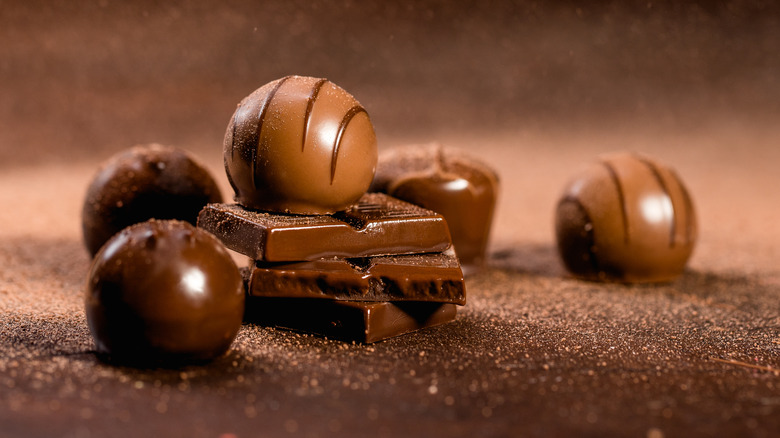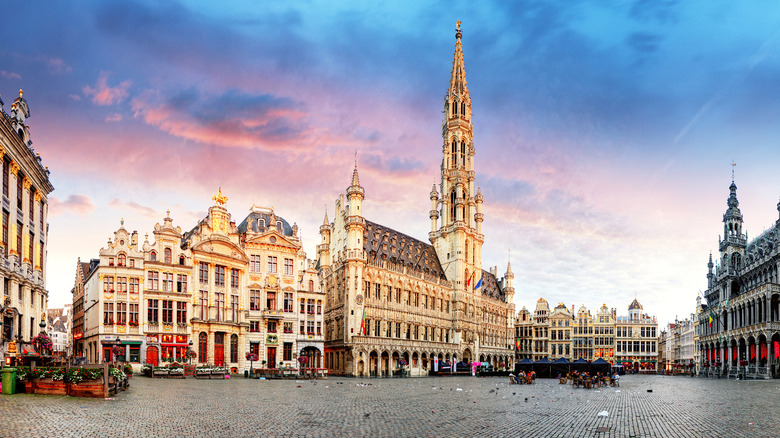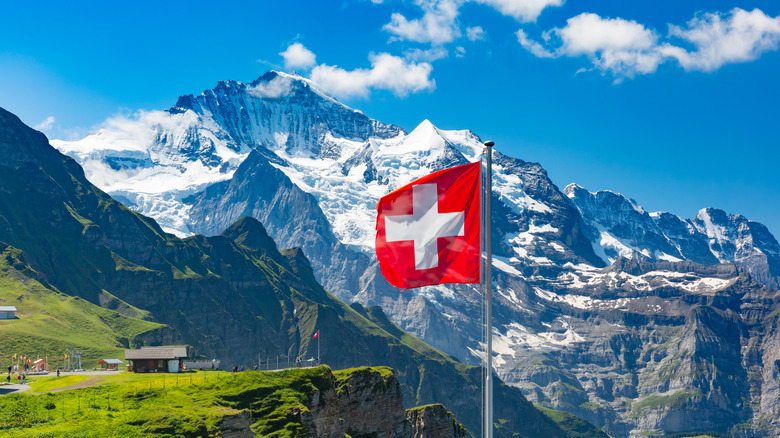Swiss Chocolate Vs. Belgian Chocolate: What's The Difference?
Chocolate... it's one of those foods that people crave and dream about. It's rich, it's creamy, it's sweet. Decadent chocolate recipes like this flourless chocolate torte can elicit so many feelings all at once like, joy, longing, and intrigue. Chocolate is eaten in celebration, for romance, and even for comfort during hard times. Whether it's hot chocolate in the winter, or chocolate ice cream in the summer, chocolate makes sure you're thinking about it long after you've finished eating.
Some of the best chocolate in the world comes from Europe and there are two countries that consistently rank near the top — Switzerland and Belgium. When it comes to determining which chocolate is superior, of course, that's subjective; it mostly comes down to personal preference. But there are differences between these two types of chocolate, and they're primarily a result of each country's history and the techniques use to make this decadent treat.
Belgium's history with chocolate is complicated
According to Culture Trip, Belgium might have introduced Switzerland to chocolate. The story goes that in 1697, the Mayor of Zurich, Heinrich Escher visited Brussels and was served a cup of hot chocolate and loved it. At that time in history, chocolate was reserved for nobility and Escher was such a fan that he brought the recipe back to his home country of Switzerland.
Later, Belgium became a major trader of chocolate after colonizing the area that is today The Democratic Republic of Congo and taking control of a large supply of high-quality cocoa in the area. This gave Belgium a strong foothold in the world's chocolate market. Even today, Belgium maintains its cocoa importing connections to the area, which is now war-torn Angola.
Belgium takes its chocolate seriously and has insisted on high standards for centuries. In 1884, laws were passed in Belgium protecting Belgian chocolate by stating that it must be made with a minimum of 35% cocoa, per The Real World, so Belgian chocolate is often considered to be darker, richer, and have stronger aromas than other types of chocolate. Belgians also insist on quality and tradition. Most Belgian chocolate is made in small chocolate shops using only high-quality ingredients and recipes that haven't changed much in over a century. Their raw materials are also delivered in heated trucks to retain quality and aroma, according to Crystal Chocolatier.
The Swiss focus on texture and process
According to The Culture Trip, during the 17th century, Switzerland began producing chocolate at its southern border with Italy. The country's first chocolate factory opened in 1819 in the town of Vevey, and many others sprung up around the area soon after. According to The American Museum of National History Blog, Rudolph Lindt invented the chocolate conche in 1879. The machine (named due to its shell-like shape) uses large stone rollers to mix and add air to the melted chocolate, which helps develop the flavor, color, and consistency of the chocolate. It also gives it that melt-in-your-mouth quality that Swiss chocolate is known for.
After Lindt invented conching, many other Swiss chocolate makers continued to innovate. In 1867, chocolatier Daniel Peter experimented with his chocolate by adding milk powder made by his friend Henri Nestlé, creating the very first milk chocolate (per The Culture Trip). And in 1908, Theodore Tobler experimented further by adding nougat, almonds, and honey to milk chocolate. He then formed the chocolate into a triangular shape, creating the very first Toblerone bar. Today, Swiss chocolate is known around the world for its creamy texture and sweet flavor.


